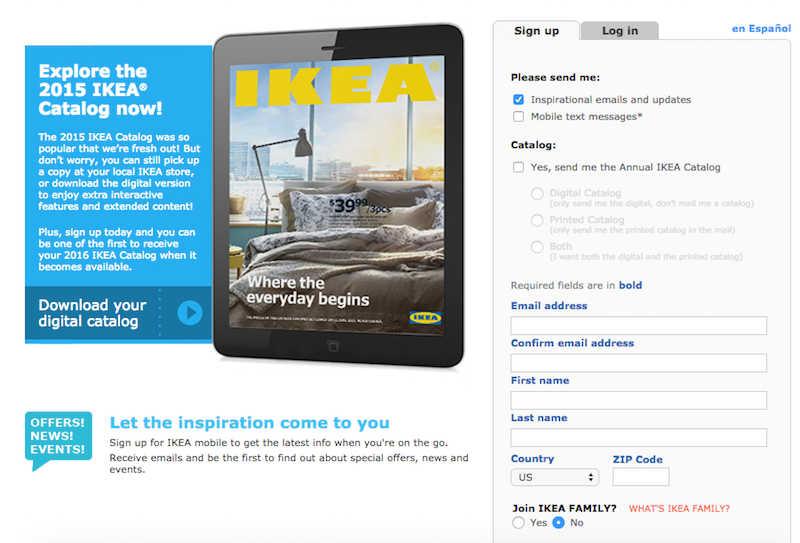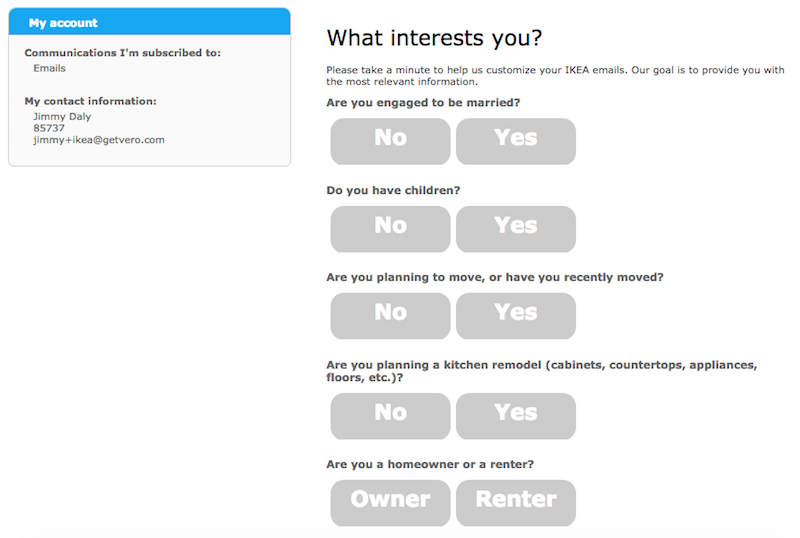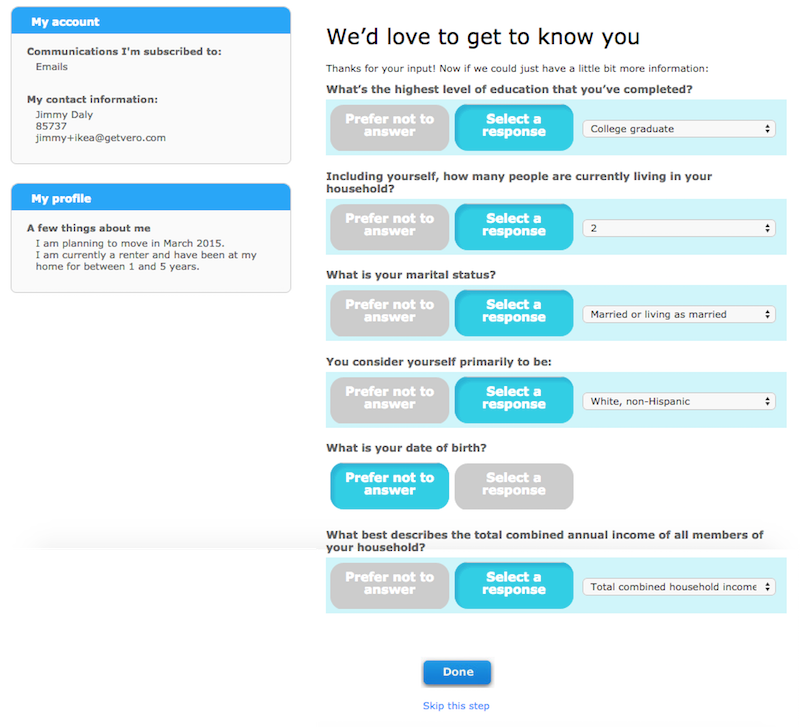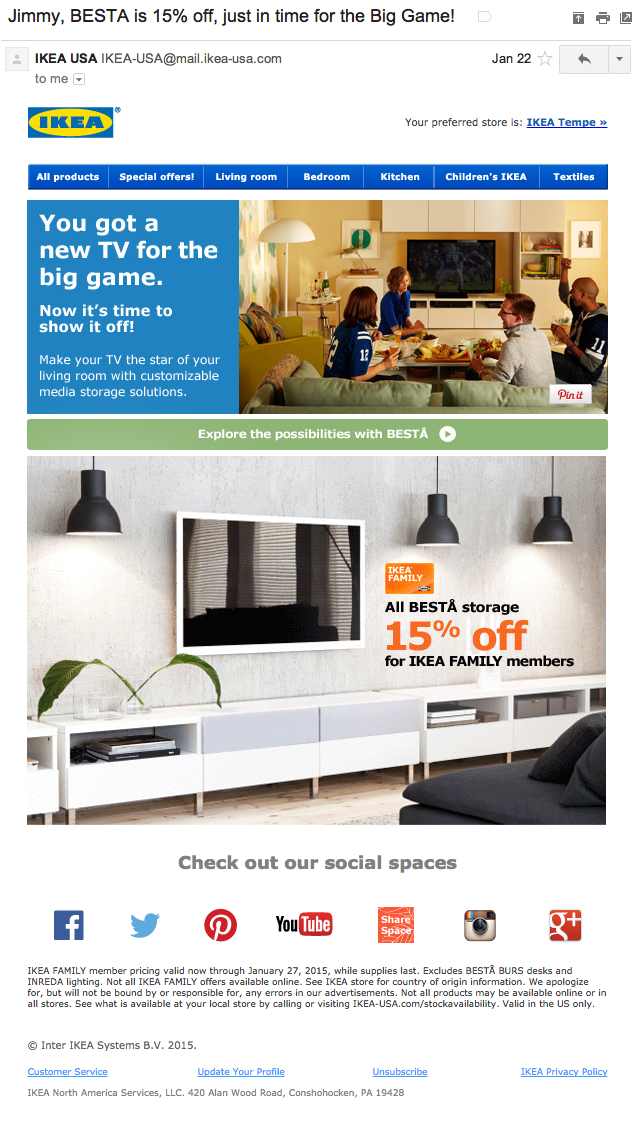- All Posts
- /
- How IKEA Sends Super-Targeted Promotional Emails

How IKEA Sends Super-Targeted Promotional Emails
Messaging and Automation-
 Jimmy Daly
Jimmy Daly
-
Updated:Posted:
On this page
Most people will tell you that a good open rate is around 20 percent.
Let’s think about that for a minute. A 20 percent open rate means that 80 percent of people are completely ignoring you. And that stinks.
This is a really difficult problem to solve. Here are just a few of the challenges standing between you and significantly higher open rate:
- People get tons of email
- People are apathetic about your product/service
- Your send emails to everyone (i.e. no one!)
- You don’t really know your list
It’s a real challenge but Swedish furniture retailer IKEA is tackling it head-on. As you’ll see in this post, segmentation, data and testing are key.
Without further ado, here’s how IKEA sends super-targeted emails.
1. Start segmentation early.
Also Read: Audience segmentation, why it’s important and how to do it
From the word “go”, IKEA is segmenting. The image below is a screenshot of their homepage. The gateway into their 2.8-million page website is an effort to get the right content in front of the right people. Clearly, segmentation is a major priority at IKEA.

2. Ask smart questions.
Once customers select their location (and it’s not optional), they can signup for the newsletter. IKEA already knows where they are and what language they speak.
With stores in 41 countries, the importance of location and language cannot be understated. How unfortunate would it be if someone signed up for the newsletter but couldn’t read the language?
During the signup process, IKEA asks a number of optional (and very smart) questions. It begins as you might expect …

… but then it gets more interesting …

… and then even more interesting …

Here is another look at some of the questions and how the answers might affect the emails new subscribers receive:
- Are you engaged to be married? Send information about wedding registries
- Do you have children? Send information on the children’s collection
- Are you planning to move, or have you recently moved? Send inspiration on outfitting a new home
- Are you planning a kitchen remodel (cabinets, countertops, appliances, floors, etc.?) Send information about IKEA’s installation services
- Are you a homeowner or a renter? Send information about organizing apartments
It’s easy to see how much the emails could vary based on the data.
For example, if a new subscriber has children, it’s very important to tailor their emails around children’s furniture. Kids will likely go through beds and dressers much faster than adults, meaning IKEA has several opportunities to sell products. And if they don’t have children, it would be an incredible waste of time to send emails with children’s products. One irrelevant email could ruin the relationship between IKEA and the new subscriber.
3. Send targeted emails.
IKEA knows that I’m a 28-year-old married college graduate with no children. And that means I watch football.
You don’t need a data scientist to tell you that since 73 percent of men watch football (source) and 114.5 million people watched the Super Bowl (source). Still, this is information they wouldn’t have if they didn’t ask.
Also Read: Use dynamic content to increase email engagement
This email arrived about 10 days before the Super Bowl. It’s personalized with my name, the closest IKEA store and, most importantly, a promotion targeted at my demographic.

4. Integrate everything with content.
This isn’t directly related to sending super targeted emails but it’s important to note. IKEA integrates content into everything they do.
Take the living room section of their website. As you scroll, products and content are mixed together. It looks and feels congruent. The content does a nice job of bridging the gap from inspiration to purchase.
Products:

Content:

For way more on IKEA’s content marketing, check out Contently’s post How IKEA Became Kings of Content Marketing.
5. Learn as you go.
IKEA has a great baseline to test against but their has only just begun.
Email marketing isn’t a “one and done” strategy. The best email marketers collect data from campaigns – opens, clicks, conversions, etc. – and continually refine their emails and landing pages.
How are you going to send more targeted emails? Let us know in the comments.
[sam id=2 codes=’false’]

